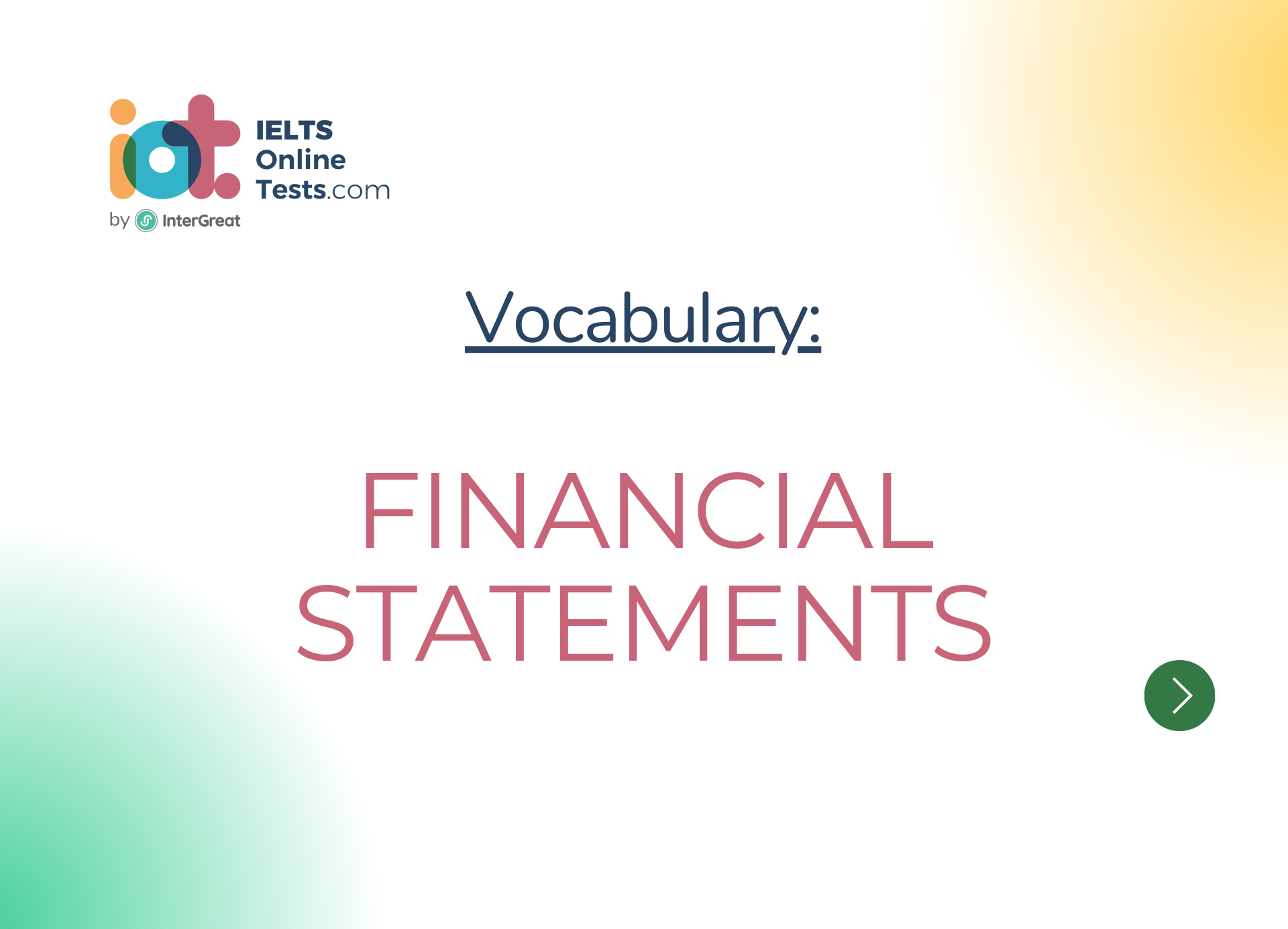
Financial statements
Below is a detailed list of vocabulary related to financial statements for the IELTS band score 4.5-6.0:
Financial Statements:
Formal records that present the financial activities and position of a business.
Income Statement (Profit and Loss Statement):
A financial statement that shows a company's revenues, expenses, and profits or losses over a specific period.
Balance Sheet:
A financial statement that provides a snapshot of a company's assets, liabilities, and shareholders' equity at a specific point in time.
Cash Flow Statement:
A financial statement that shows the inflow and outflow of cash in a business over a specific period.
Statement of Retained Earnings:
A financial statement that outlines changes in a company's retained earnings over a specific period.
Revenue:
The total income generated by a company through its primary operations.
Sales:
The total value of goods or services sold by a company during a specific period.
Cost of Goods Sold (COGS):
The direct costs associated with producing goods or services sold by a company.
Gross Profit:
The difference between revenue and the cost of goods sold.
Operating Expenses:
The costs incurred to run a business, excluding COGS.
Operating Income:
The profit derived from a company's core business activities before interest and taxes.
Net Income:
The profit remaining after all expenses, including taxes and interest, have been deducted from revenue.
Assets:
Resources owned by a company, including cash, inventory, equipment, and property.
Liabilities:
Debts and financial obligations that a company owes to others.
Shareholders' Equity:
The value of assets that shareholders own in a company, also known as net worth or book value.
Current Assets:
Assets that are expected to be converted into cash or used up within one year.
Non-Current Assets:
Long-term assets that are not expected to be converted into cash within one year.
Current Liabilities:
Short-term debts and obligations that are due within one year.
Non-Current Liabilities:
Long-term debts and obligations that are not due within one year.
Working Capital:
The difference between current assets and current liabilities, representing a company's short-term liquidity.
Cash Flow from Operating Activities:
The net amount of cash generated or used by a company's core business operations.
Cash Flow from Investing Activities:
The net amount of cash used for investing in assets or received from the sale of assets.
Cash Flow from Financing Activities:
The net amount of cash generated or used from raising capital or repaying debt.
Depreciation:
The allocation of the cost of tangible assets over their useful life for accounting purposes.
Amortization:
The allocation of the cost of intangible assets over their useful life for accounting purposes.
Earnings Per Share (EPS):
The portion of a company's profit allocated to each outstanding share of common stock.
Profit Margin:
The ratio of net income to revenue, representing a company's profitability.
Financial Ratios:
Quantitative measures used to analyze a company's financial performance.
Liquidity Ratios:
Ratios that assess a company's ability to meet short-term obligations.
Solvency Ratios:
Ratios that evaluate a company's long-term financial stability and ability to meet long-term obligations.
Profitability Ratios:
Ratios that measure a company's ability to generate profit from its operations.
Efficiency Ratios:
Ratios that assess a company's operational efficiency and asset utilization.
Audited Financial Statements:
Financial statements that have been reviewed and verified by external auditors for accuracy and compliance.
Financial Reporting:
The process of preparing and presenting financial statements to stakeholders.
Fiscal Year:
A 12-month accounting period used by a company for financial reporting.
Accrual Basis Accounting:
Accounting method where revenues and expenses are recognized when earned or incurred, regardless of cash flow.
Cash Basis Accounting:
Accounting method where revenues and expenses are recognized when cash is received or paid.
Consolidated Financial Statements:
Financial statements that combine the financial data of a parent company and its subsidiaries.
Footnotes:
Additional information provided in financial statements to explain specific items or accounting practices.
Financial Analysis:
The process of evaluating financial data to make informed business decisions.
It's essential to understand these terms in the context of financial reporting and analysis. Practicing their usage will help you improve your understanding and English language skills for the IELTS exam. Good luck with your studies!




